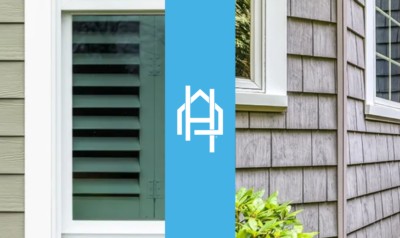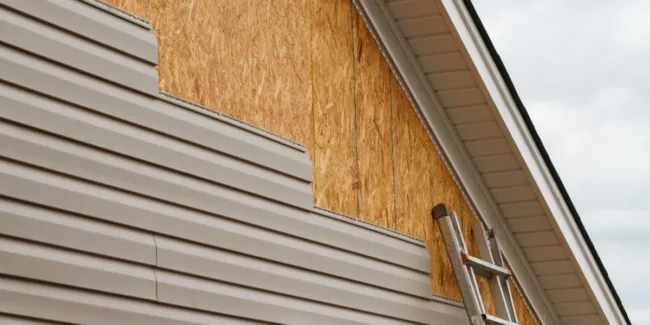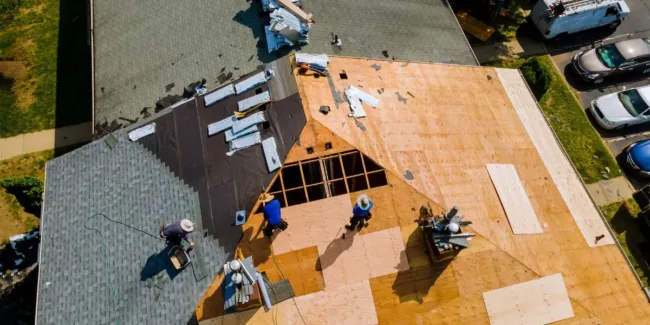Do You Need a Permit to Replace Siding in Virginia?
In Virginia, you generally do not need a permit to replace siding on a single-family home if the work is purely cosmetic and does not involve any structural changes. This is supported by the Virginia Uniform Statewide Building Code (VUSBC), which sets the baseline requirements for construction projects across the state. The VUSBC aims to promote safe building practices and ensure that homes meet minimum standards for durability and safety, without burdening homeowners with unnecessary regulations for simple cosmetic updates.
| Siding Replacement Scenario | Permit Required? |
| Standard siding replacement (single-family) | No |
| Siding replacement in historic district | Yes |
| Siding replacement in flood hazard area | Yes |
| Structural wall changes during siding project | Yes |
| Commercial/multi-family properties | Check locally |
When a Permit Is Not Required for Siding Replacement
For most homeowners, replacing the existing siding with new siding of a similar type and in the same location does not require a permit. This means that if you’re simply swapping out your old, weathered siding panels for new ones—whether it’s vinyl, wood, fiber cement, or another common material—you can usually proceed without a permit as long as there are no changes to the structure itself. These standard siding replacement projects are considered cosmetic improvements because they do not affect the structural integrity of your home.
Cosmetic renovations also include work such as painting, re-siding, or replacing damaged siding panels in the same location. If no changes are made to the wall framing or other structural components, these types of projects are typically exempt from permit requirements. This approach keeps things simple for homeowners while still allowing building officials to enforce safety standards for larger, more complex projects.
When a Permit Is Required for Siding Replacement
Although standard siding replacement on a single-family home is usually permit-free, there are several key exceptions that homeowners should be aware of. In these situations, obtaining a permit is not just a good idea—it’s mandatory to ensure your project is safe and compliant.
Historic Districts
If your home is located in a historic district designated by your locality, a permit may be required even for siding replacement. Historic districts often have strict guidelines for exterior changes to preserve the character and appearance of the neighborhood. These guidelines can include restrictions on the type of materials you can use, the colors you can choose, and how the siding is installed. Before starting any work in a historic district, check with your local planning or preservation office to understand what’s allowed and what documentation you need. Failing to follow these rules can result in fines or even orders to undo the work, so it’s essential to take them seriously.
Special Flood Hazard Areas
Virginia has many areas designated as special flood hazard zones by the Federal Emergency Management Agency (FEMA). If your property is in one of these zones, you may need a permit for siding replacement—even if the work is otherwise considered cosmetic. Additional floodplain reviews or documentation may be required to ensure that your project does not create new flood risks or violate existing floodplain management regulations. These rules are in place to protect you, your neighbors, and your community from increased flooding hazards.
Structural Changes
If your siding replacement project involves more than just swapping out panels—such as altering or repairing the wall framing, adding or removing windows or doors, or making other structural changes—you will need a permit. These types of projects affect the integrity and safety of the building, which is why they fall under the jurisdiction of the VUSBC and your local building department. Structural changes can range from cutting new openings for windows or doors to replacing entire sections of exterior wall framing due to rot or other damage. In these cases, a permit ensures that the work is done according to modern standards and that your home remains safe for years to come.
Commercial or Multi-Family Buildings
Permit requirements can also differ for commercial properties or multi-family dwellings. While a single-family home can often undergo cosmetic siding replacement without a permit, commercial and multi-family properties have stricter rules. Local building departments typically require permits for any siding replacement on these types of properties to ensure that fire safety, structural integrity, and other building code standards are met. If you’re working on a property that is not a single-family home, always check with your local building department before beginning work.
Local Examples and Common Practices
Virginia’s top localities, including Virginia Beach, Henrico County, Pulaski, and James City County, all follow the state’s general rules. For single-family homes, standard siding replacement does not require a permit unless the property is located in a historic district, special flood hazard area, or the work involves structural changes. This consistency in local practices makes it easier for homeowners to plan their projects with confidence, knowing that they likely won’t need a permit for basic cosmetic updates.
For example, in Henrico County, homeowners can replace siding panels on a single-family home without a permit as long as the work doesn’t involve structural repairs or major alterations. However, if the home is in a historic district or if there’s any structural work involved—such as replacing rotted wall framing or adding insulation that changes the depth of the wall—a permit is required. Similarly, in Pulaski, minor cosmetic repairs to siding do not require a permit, but any structural changes trigger the need for one.
Best Practices for Homeowners
Navigating the permit process can seem daunting, but by following a few best practices, you can avoid unnecessary delays and headaches:
- Start by Reviewing Local Requirements: Contact your local building department early in the planning process to confirm whether a permit is required for your project. Local officials can provide guidance tailored to your area and help you understand any additional regulations that might apply.
- Document Your Project: Even if a permit is not required, it’s a good idea to document your project with photos and notes. This can be helpful for insurance purposes, future sales, or if questions arise later about the work that was done.
- Work with Qualified Professionals: If your project does require a permit, working with a licensed contractor can make the process smoother. Experienced contractors understand the permit process and can ensure that your work is done safely and to code.
- Understand Historic and Floodplain Rules: If your property is in a historic district or flood zone, take the time to learn about the special rules that apply. These areas often have additional requirements that go beyond the typical building code.
- Focus on Safety and Longevity: While it’s tempting to see permits as a hassle, remember that they’re in place to ensure the safety and longevity of your home. Following these rules protects your investment and your family’s well-being.
Bottom Line for Virginia Homeowners
For most Virginia homeowners, replacing siding on a single-family home does not require a permit unless your property is in a historic district, special flood hazard area, or the work involves structural changes. The statewide rules, supported by local practices, are designed to make it easy for homeowners to maintain and improve their homes without unnecessary bureaucracy. However, the variations in local interpretation and enforcement mean that it’s always wise to check with your local building department before starting any project.
By taking the time to understand these rules and following the best practices outlined above, you can ensure that your siding project goes smoothly. Whether you’re refreshing your home’s look with new siding panels or tackling a more complex project that involves structural repairs, knowing the permit requirements can help you avoid costly surprises and keep your project on track.
Need help with your siding replacement project? Home Genius covers all permitting and regulation requirements, so you can focus on enjoying your newly updated home. From handling paperwork and inspections to ensuring full compliance with local codes, we take the stress out of the process and guarantee a smooth, professional installation. Contact Home Genius today to schedule your free consultation and let us handle the details!






